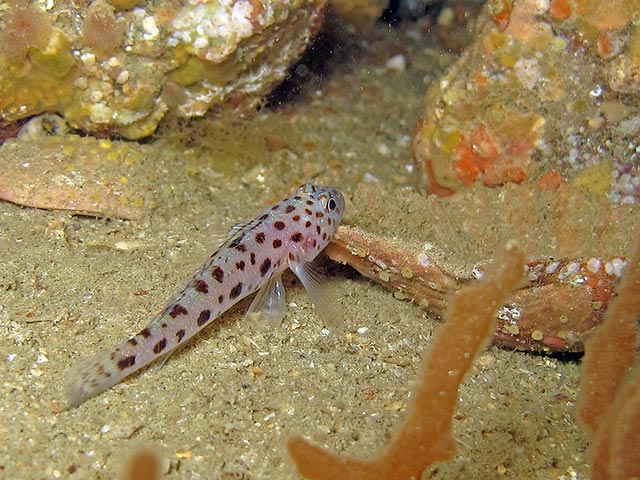A shy fish, the leopard-spotted goby lives in cracks on steep walls and caves. Shipwrecks are also a favourite habitat. You find them in the shallows and down to 40 m. It tends to face its crevice home and shoot back in if disturbed, making it difficult to take photos of it face on. Dark brown or brick red splodges cover this goby. It has diamond-shaped scales, blue-edged dorsal fins and a black spot at the back of the first dorsal fin. Its distinctive colouring makes it one of the easiest gobies to identify.

Gobies are the largest family of marine fishes with about 500 Indo-Pacific species alone. However, the Leopard-Spotted Goby is not a tropical species but is found in the Mediterranean and Eastern Atlantic, from the Canary Islands to the British Isles and Norway.

This goby breeds from May to July. Adult males excavate a nest under stones or shells and defend their territory around the nest. The female deposits her eggs on the underside of the nest roof. The male goby then guards the eggs, fanning them to ensure enough oxygen until they hatch.

Its scientific name is Thorogobius ephippiatus. It was so called as it was first “discovered” by scientists on a Danish research vessel named Thor. Ephippiatus is latin for saddled. So Thor’s goby with a saddle.
This goby may live at least 10-12 years, as deduced by counting annual rings laid down in the earstones (otoliths).

Gobies are small fish with large mouths. They are often confused with blennies but can be easily distinguished by their two dorsal fins as opposed to the blennies’ one.
Animalia (Kingdom) > Chordata (Phylum) > Osteichthyes (Class) > Perciformes (Order) > Gobiidae (Family) > Thorogobius (Genus) > Thorogobius ephippiatus (Species)
